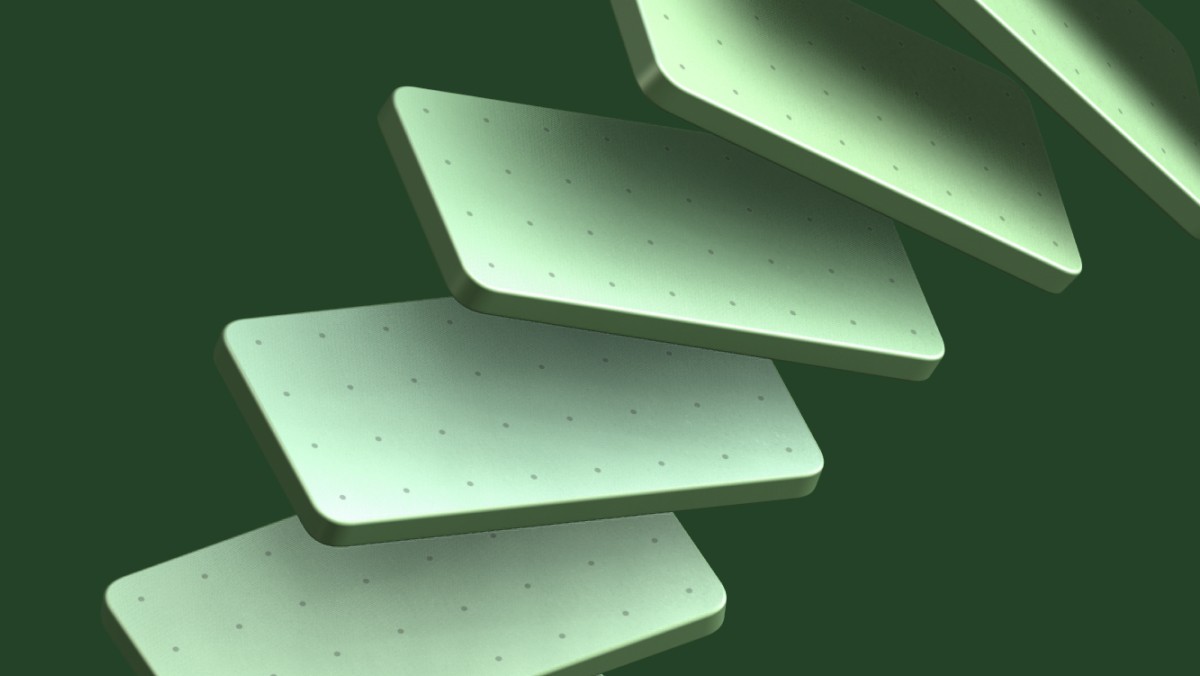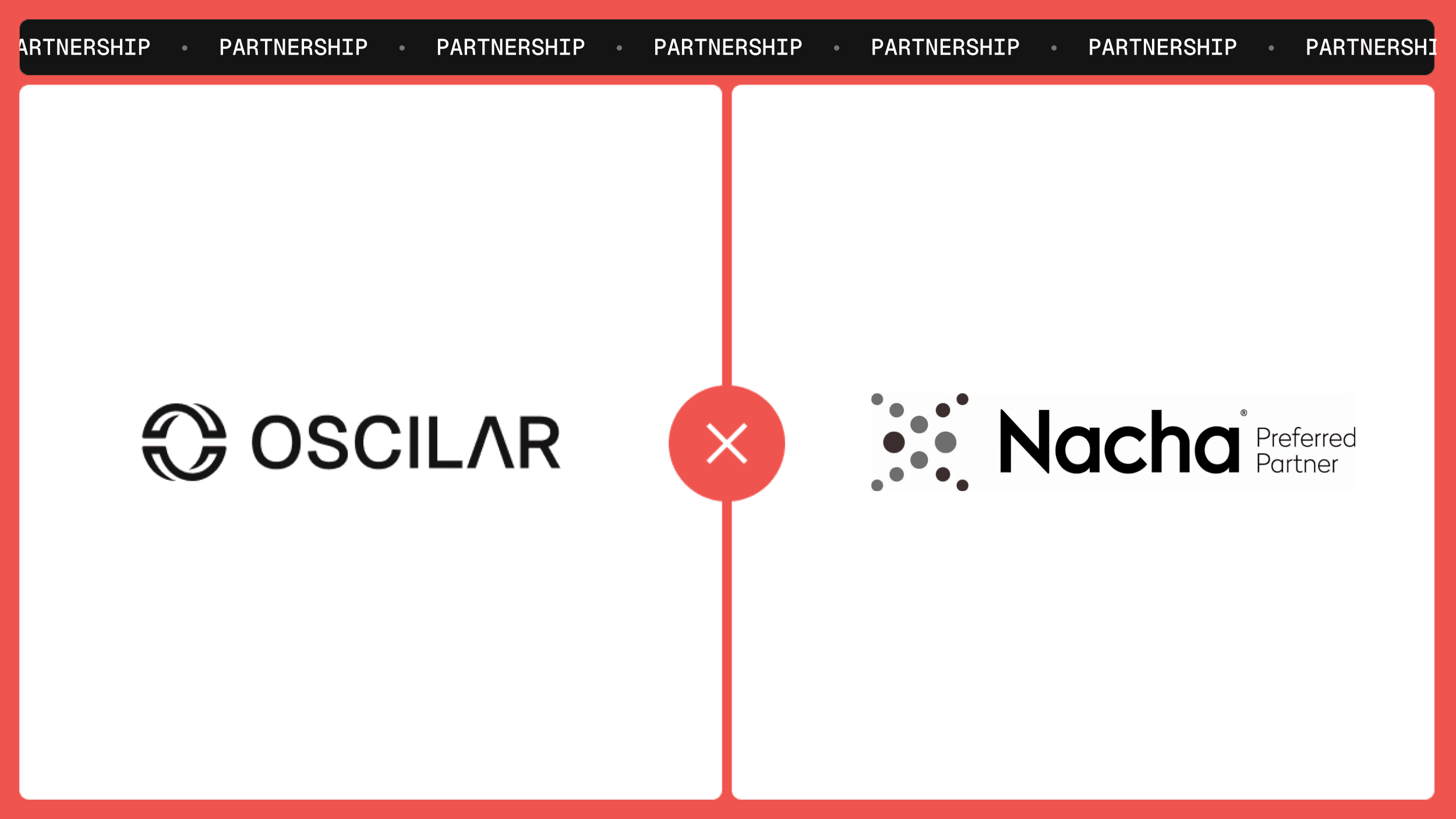Hey, it’s Andrew—I’m Oscilar’s Principal Brand Designer, here to welcome you to the new us. We’ve been hard at work on developing a whole new take on how we look. New colors, refreshed logo, updated typography, and an all-new visual language built on modularity. Here’s a little peek into some of the thinking behind it.
What were our goals?
Mature our design language. Oscilar is growing, and that means our customers are too. Improving how we present ourselves is just another way we aim to meet the high quality bar enterprise teams demand from their tools and partners.
Improve our scalability. As teams grow, a lack of scalability becomes a big bottleneck for the unprepared. We needed to make sure that as we expand, our small brand design team (read: me) can keep up while maintaining a level of consistency across our growing material needs.
Raise our own bar. If we believe that our product is really good (which we do) then we know it deserves a visual identity that is also really good. It’s only fair that we put love and care into how we represent what our fantastic engineering team works hard to build. We want to be a design leader as well as a product and platform leader.
The Process
We moved with speed and intent, developing our new identity and reimagining all of our core branded collateral in less than 6 months. This was only possible through our team’s willingness to prioritize the high impact work, and avoid getting caught up in projects that were not as critical to our long-term goals. We held regular check-ins along the way with the rebrand core team, a small and focused group of Oscilarians dedicated to helping the work succeed. To make this large and sprawling project more manageable, we broke it down into 7 phases.
Strategic Alignment. Make sure company leaders are all in agreement on the foundational aspects of our target audience and high-level positioning.
Discovery and Research. Gather feedback from internal and external sources around the perception of our brand, and gather thorough examples of our top competitor’s brand execution.
Creative Exploration. Define our core traits that we want our identity to represent, and begin setting the initial direction for our visual style.
Identity Development. Work through the specifics of our identity elements, crafting the new identity through iteration based on all previous feedback and directional agreement.
Final Identity Approval. Present the new identity to founders and key leaders for final approval.
Internal Deployment. Walk the company through the new brand strategy internally, and devise a rollout plan for how our new identity will be deployed across all the places we show up.
Launch/Rollout. Execute on our rollout plan and launch the new identity publicly. (We’re here!)
Design Elements
Our new visual identity has been designed to be more flexible while staying consistent. This meant rethinking our colors to offer a broader range with more hues that can be applied with more systematic intent. Our core platform capabilities—Onboarding, Credit Underwriting, Fraud Defense, and AML Compliance—now each have preferred color applications, and our updated Oscilar Vermillion acts as a unifying hue across our materials.


Typographically we’ve chosen Geist, an awesome font designed by the talented team at Vercel. It’s available as a Google Font which makes it easy to use almost everywhere, and its variable settings and monospaced sister font offer enough flexibility to make it our own.

Our dimensional, modular graphic language takes inspiration from the modularity and innovation of the Oscilar platform. (Sales alert: It features advanced ML models built for a multitude of use cases, and a GenAI-powered interface that is transforming what's possible in risk management. That’s what our customers say, anyways.)
Like all designers I love a good grid, and since 3D opens up one extra axis on which things can be perfectly aligned with one another, naturally I jumped at the chance. Enter Spline, a 3D tool that has been a game-changer in allowing us to bring interactive elements to our website and other materials. We developed a system of tiles to represent our platform in a more abstract and visually interesting format, and built libraries of assets to make creating compositions more streamlined.






A Continuous Effort
We see this initial refresh as just the beginning—the start of a new chapter in Oscilar’s approach to design. We’ll continue to evolve, experiment, and iterate, and we look forward to continuing to raise our bar even further. We think this graphic system has a lot of room to grow and mature into many cool directions, so make sure to stay tuned for what other neat things we cook up.
Major thanks to Neha Narkhede, Tomas Lobo, Amy Sariego, Aaron Steger, Arman Armaghanyan, and the rest of the Oscilar team who provided feedback and insights throughout the process. The next phase in our design journey starts now.









